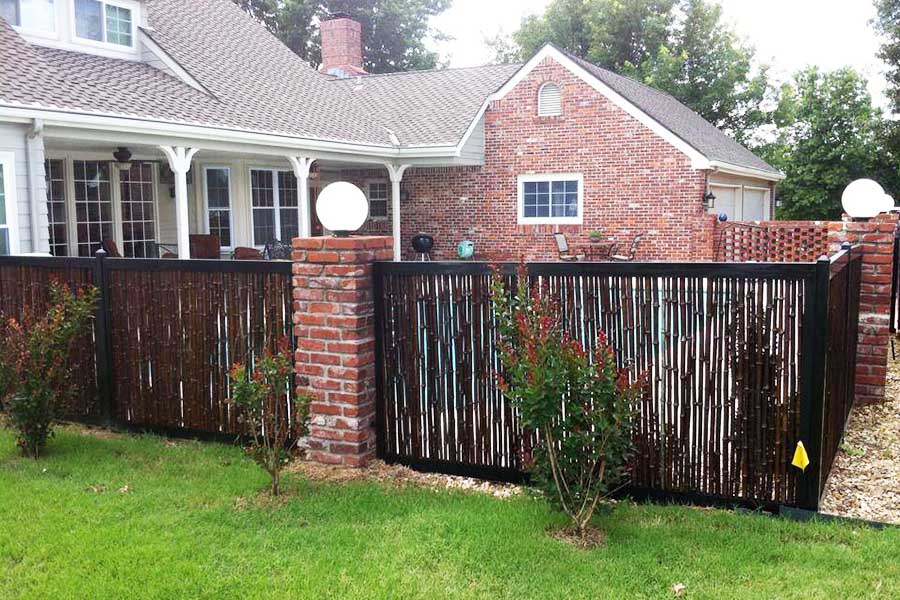All Categories
Featured

As sustainability becomes a concern for companies and home owners alike, the demand for green products, consisting of fencing materials, has actually increased. Conventional fencing choices such as vinyl, timber, and steel can have negative ecological impacts, but there are currently numerous eco-conscious options to take into consideration. Selecting green fence materials not only helps in reducing your carbon footprint however likewise adds to a more sustainable and natural environment.
- Bamboo Fence. Bamboo is among one of the most environment-friendly fencing options offered. Understood for its quick growth and very little environmental influence, bamboo is a highly sustainable resource. Unlike conventional hardwoods, bamboo can be collected in a couple of years and grows back quickly, making it a sustainable choice for secure fencing. It's solid, durable, and resistant to bugs, offering a all-natural and stylish choice for house owners.
Perks: Bamboo is fast-growing, light-weight, and lasting. It calls for fewer fertilizers and chemicals contrasted to various other plants, making it a low-maintenance choice. Considerations: While bamboo is long lasting, it might need regular upkeep to shield it from weathering and natural wear. It can also be prone to fracturing in colder climates. 2. Recycled Products. Fencings made from recycled materials are becoming increasingly prominent as an eco-friendly option. These fences are made from post-consumer plastic, redeemed wood, and other recycled products, maintaining waste out of landfills. Utilizing recycled materials decreases the demand for new raw sources, decreasing ecological degradation.

Conveniences: These fences assist lower waste and preserve natural resources. They are also usually low-maintenance and durable. Factors to consider: While recycled fences can be resilient, the appearances may not constantly match typical fencing options. However, many styles are now offered that resemble the appearance of timber or rock. 3. Compound Fence. Compound secure fencing is made from a mixture of recycled timber fibers and plastic, providing the look of timber without the environmental impact. Many composite fences are made from recycled content, more improving their green status. These fences are resilient, need marginal maintenance, and do not require to be treated with damaging chemicals like conventional timber fencings.
Benefits: Composite fences are resilient, resistant to rot, and require little maintenance. They additionally supply a comparable aesthetic to timber without logging issues. Factors to consider: While they are low-maintenance, composite fencings might be a lot more expensive than typical timber or plastic options. The manufacturing process can additionally be energy-intensive. 4. Cedar and Redwood Secure Fencing. Cedar and redwood are natural wood products that are frequently considered a lot more green contrasted to various other woods. These sorts of wood are naturally immune to decay, bugs, and wetness, which minimizes the demand for chemical treatments. In addition, these trees are expanded in lasting forests, ensuring that they are gathered responsibly.
Advantages: Cedar and redwood are both naturally lovely and durable products. They supply natural resistance to bugs and rot, which helps in reducing the demand for chemical therapies. Factors to consider: These timbers can be extra expensive than various other choices. They likewise call for occasional upkeep, such as discoloring or securing, to ensure durability. 5. Living Fencings (Hedges and Shrubs) Living fences, made from hedges, trees, or hedges, are an environmentally friendly alternative that also offers all-natural privacy and visual allure. Plants such as privet, boxwood, bamboo, and arborvitae are commonly made use of for producing thick, eco-friendly fences. These living barriers aid with sound reduction, improve air top quality, and supply habitat for neighborhood wild animals.
Benefits: Living fencings promote biodiversity, improve air top quality, and boost the visual appeal of your home. They likewise take in co2 and add to a greener environment. Considerations: Living fencings need upkeep, such as pruning and watering, to guarantee they grow effectively. They might not provide the exact same degree of protection as traditional secure fencing products. 6. Stone and Reclaimed Block Fencing. Rock and reclaimed brick fencings are an additional environment-friendly choice. These materials are sturdy, need minimal upkeep, and have a long life-span. When redeemed from old structures or structures, they help in reducing the requirement for new materials and stop waste from going into garbage dumps.
Perks: Stone and block are durable, weather-resistant, and give a timeless, traditional visual. Recovered products additionally have a minimal environmental footprint. Considerations: The setup of stone and block fencings can be labor-intensive, and the materials might be much more expensive than various other alternatives. Nonetheless, the long-term sturdiness and reduced upkeep prices can make them a rewarding financial investment. Final thought. Selecting an eco-friendly fence material is a wise way to reduce your ecological impact while boosting your property's personal privacy and aesthetic allure. Bamboo, recycled products, composite fencing, and living fencings all use lasting options that reduce waste, preserve sources, and promote a greener way of living.
By picking one of these environment-friendly fencing choices, you add to the defense of the setting while developing a gorgeous, practical outside area. The appropriate material will certainly rely on your choices, climate, and the degree of upkeep you want to provide, but rest ensured that there are various eco-conscious choices that align with your lasting way of living.
Latest Posts
Discover Oil Changes & More: Complete Repair Options from Montclare Auto Repair
Published May 28, 25
1 min read
Experience WyHy FCU – Top Perks for Your Future
Published May 28, 25
1 min read
Explore Limited-Time Auto Repair Offers in Chicago at Montclare Auto Repair
Published May 26, 25
1 min read
More
Latest Posts
Discover Oil Changes & More: Complete Repair Options from Montclare Auto Repair
Published May 28, 25
1 min read
Experience WyHy FCU – Top Perks for Your Future
Published May 28, 25
1 min read
Explore Limited-Time Auto Repair Offers in Chicago at Montclare Auto Repair
Published May 26, 25
1 min read